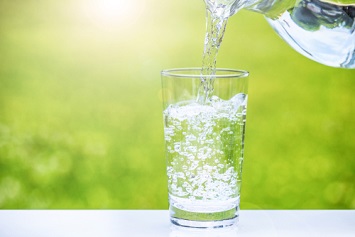In its proposed amendments to the federal Lead and Copper Rule (LCR), the EPA estimates that, nationwide, there are between 6.3 million and 9.3 million homes that receive drinking water through lead service lines (LSLs). (Uncertainty about the actual number of LSLs underlies the proposed requirement that public water systems (PWSs) inventory the LSLs in their jurisdiction.) The proposal would require that PWSs conduct full LSL replacements (LSLRs) when lead in the service line exceeds the lead action level (AL) of 15 parts per billion (ppb).
Full LSLR occurs when both the PWS portion of the LSL and the homeowner portion are replaced with nonlead (usually copper or plastic) piping. The PWS would be obligated to replace LSLs exceeding the AL at the rate of 3% a year. The proposal also contemplates goal-based LSL replacements that occur mainly when homeowners act independently to replace their portion of the LSL. In such cases, the proposal would require that the PWS follow up by replacing its portion of the LSL if it has not already done so.
Average LSLR Cost
One question hanging over the proposal is, Where is the money to pay for full LSLRs—both the PWS-owned portion and the homeowner-owned portion—going to come from? The EPA concedes that that LSLR “can be expensive at an average cost of $4,700, ranging from $1,200 to $12,300 per line replaced.” Under federal law, no executive branch agency is required to pay for LSLRs in homes. Given that many, if not most, LSLs are in minority and low-income areas, it is likely that very few homeowners in these areas will be able or willing to independently bear the full cost of replacements. The economic burden is comparable for small PWSs that are chronically strapped for funds to meet their Safe Drinking Water Act compliance obligations while still trying to keep their aging infrastructures in working order.
The EPA is acutely aware of the economic challenge to LSLR. Accordingly, in conjunction with the proposal, the Agency issued Strategies to Achieve Full Lead Service Line Replacement. The authors of the Strategies document did their homework; the 36 pages of text is followed by 8 pages of references. The document discusses the likelihood of volunteer LSLRs that may occur by looking at two existing EPA programs in which homeowners are also urged to reduce environmental risks to their health from radon and lead-based paint. The EPA found that high-cost projects addressing these risks are comparable to the costs of LSLR.
The strategy organizes LSLR financing under two general headings—ratepayer revenue and nonratepayer revenue. In either case, states and local agencies work together to acquire the money needed to both fund PWS LSLRs and assist homeowners with their portion of the replacement.
Small PWSs, which have the overwhelming majority of LSLs, may find the documentuseful as they seek out financing sources. Here are several points the Strategies document makes.
Ratepayer Revenue
- The use of rate payer revenue to fund LSLR helps spread the cost of the full LSLR program to all water system customers, including those not served by LSLs. Rate subsidization can be especially effective in systems where LSLs are a small portion of the total service line inventory.
- In an “in-depth” review, researchers found that 13 states that collectively have an estimated 4.2 million LSLs (over two-thirds of the nation’s remaining LSLs) have no constitutional or statutory prohibitions on the use of rate funds to replace LSLs on private property. The researchers noted that while they did not look at the laws in the other 37 states, they indicated that they would expect them to also follow the recent trends and approve the use of ratepayer funds to replace customer-owned LSLs.
- Rate increases by PWSs, if used specifically for customer-owned LSLR, may be limited by public fund usage laws.
- Depending on the time frame surrounding the rate change process, PWSs can potentially use rate revenue to either fund the LSLR program directly or pay back funding obtained through another mechanism such as loans.
Nonratepayer Revenue
- The major source of nonratepayer revenue is the federal government.
- There are many federal programs that may be used to fund LSLR programs. These include the Drinking Water State Revolving Fund, Water Infrastructure Finance and Innovation Act Program, Water Infrastructure Improvements for the Nation Act of 2016 grant programs, and the U.S. Department of Housing and Urban Development’s Community Development Block Grant Program.
- PWSs may also be able to impose special assessments, tax levies, and surcharges to help fund LSLR programs or help homeowners pay for the replacements.
- There are abundant “creative funding mechanisms” being used by communities for LSLRs, including making use of sales taxes, involving private donors in replacement programs, and targeting LSLRs to communities most in need.
Overall, the EPA estimates that the proposed provisions will result in approximately 214,000 to 350,000 LSLRs over the next 35 years. The EPA has not evaluated the extent to which voluntary LSLRs may be additional to the LSLRs undertaken in PWSs with 3% or goal-based LSLR requirements.

